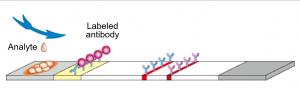Would you believe me if I told you there was a computer that takes up 5202m of space, needs 300,000 meters of cables, uses the amount of electricity that can run 8,000 houses, and needs 15,000 liters of water per minute to stay cool? Surprisingly, there are at least 500 of these kind of computers on earth and we call them “supercomputers”. After the first supercomputer was introduced by the Control Data Corporation in 1976, supercomputers have become integral keys to solving laborious tasks that are crucial to humankind. At this challenging time, battling against COVID-19, supercomputers assist doctors, scientists, researchers, public officials, and law makers in tackling the trickiest problems with their exceptional ability. So, what exactly are “supercomputers” and what can we do with them?
Supercomputers are defined as computers that have the fastest computational performance among contemporary or existing computers. Since this definition is a very relative concept, a computer that is considered a supercomputer today can become an ordinary high-performance computer in the future as technology develops. Twice a year, a list of the top 500 supercomputers is announced based on their performance. When a supercomputer that was once on the list is no longer listed, it is regarded as having reached the end of its life as a ‘supercomputer’.
It is necessary to look into the previously mentioned rank of top 500 supercomputers when talking about the performance of supercomputers. In 1993, Hans Meuer and Jack Dongarra started to make a list of the most powerful 500 supercomputers to provide credible information regarding high performance super computers. From that year on, this list is updated twice a year, in June and in September. So, what criteria is used when assessing the supercomputers’ performance? To assess the supercomputers’ performance in the TOP500 table*, Rmax value is mainly used along with Rpeak. Rmax is an actually measured value of Flops while Rpeak is a theoretically computed maximum value of Flops, considering the numbers of processors fitted in the system, clock frequency* and several factors of performance. Flops stand for floating-point operations per second, used when describing the performance of supercomputers. The number 1 supercomputer on the TOP 500 in September of 2020 was ‘Supercomputer Fugaku’. It was developed by a Japanese electronic corporation named Fujitsu and the RIKEN Center for Computational Science, a national laboratory of physics and chemistry in Japan. Fugaku calculates data more than 41 ∙ 1016 times per second.
아래는 주석부분입니다.
* Clock frequency or clock rate is the frequency of pulses that the clock generator of a processor generates. It is used as an indicator of the processor’s speed and measured in clock cycles per second.
* TOP500 is the official name for the list of the 500 supercomputers with the greatest performance.
Supercomputers with their superb computational performance are required in many different fields. Since they were introduced, they have been used in weather forecasting, verifying theories in physics, and conducting complex calculations in aerospace, and bioengineering. Since they can remove risk when experimenting with difficult and dangerous tests and while giving accurate results, it is possible to develop new technologies in reduced time and costs in fields such as aerospace, electronics, chemical engineering etc. For instance, researchers at Science Applications International Corporation in San Diego established 3-D models of solar flares and coronal mass ejections with supercomputers. With this model, they could predict the impact of these phenomena, which can have a major impact on Earth’s power grids, satellites, and communications.
Would you believe me if I told you there was a computer that takes up 5202m of space, needs 300,000 meters of cables, uses the amount of electricity that can run 8,000 houses, and needs 15,000 liters of water per minute to stay cool? Surprisingly, there are at least 500 of these kind of computers on earth and we call them “supercomputers”. After the first supercomputer was introduced by the Control Data Corporation in 1976, supercomputers have become integral keys to solving laborious tasks that are crucial to humankind. At this challenging time, battling against COVID-19, supercomputers assist doctors, scientists, researchers, public officials, and law makers in tackling the trickiest problems with their exceptional ability. So, what exactly are “supercomputers” and what can we do with them?
Supercomputers are defined as computers that have the fastest computational performance among contemporary or existing computers. Since this definition is a very relative concept, a computer that is considered a supercomputer today can become an ordinary high-performance computer in the future as technology develops. Twice a year, a list of the top 500 supercomputers is announced based on their performance. When a supercomputer that was once on the list is no longer listed, it is regarded as having reached the end of its life as a ‘supercomputer’.
It is necessary to look into the previously mentioned rank of top 500 supercomputers when talking about the performance of supercomputers. In 1993, Hans Meuer and Jack Dongarra started to make a list of the most powerful 500 supercomputers to provide credible information regarding high performance super computers. From that year on, this list is updated twice a year, in June and in September. So, what criteria is used when assessing the supercomputers’ performance? To assess the supercomputers’ performance in the TOP500 table*, Rmax value is mainly used along with Rpeak. Rmax is an actually measured value of Flops while Rpeak is a theoretically computed maximum value of Flops, considering the numbers of processors fitted in the system, clock frequency* and several factors of performance. Flops stand for floating-point operations per second, used when describing the performance of supercomputers. The number 1 supercomputer on the TOP 500 in September of 2020 was ‘Supercomputer Fugaku’. It was developed by a Japanese electronic corporation named Fujitsu and the RIKEN Center for Computational Science, a national laboratory of physics and chemistry in Japan. Fugaku calculates data more than 41 ∙ 1016 times per second.
아래는 주석부분입니다.
* Clock frequency or clock rate is the frequency of pulses that the clock generator of a processor generates. It is used as an indicator of the processor’s speed and measured in clock cycles per second.
* TOP500 is the official name for the list of the 500 supercomputers with the greatest performance.
Supercomputers with their superb computational performance are required in many different fields. Since they were introduced, they have been used in weather forecasting, verifying theories in physics, and conducting complex calculations in aerospace, and bioengineering. Since they can remove risk when experimenting with difficult and dangerous tests and while giving accurate results, it is possible to develop new technologies in reduced time and costs in fields such as aerospace, electronics, chemical engineering etc. For instance, researchers at Science Applications International Corporation in San Diego established 3-D models of solar flares and coronal mass ejections with supercomputers. With this model, they could predict the impact of these phenomena, which can have a major impact on Earth’s power grids, satellites, and communications.
If it’s possible for supercomputers to solve problems, that are too complicated or too big in size for normal computers by using their superior computational performance, where would they most be needed today? It would definitely be in fighting against a virus that has shut-down the whole world and has given us a hard time since it began in January of 2020, COVID-19. Since the beginning of 2020, supercomputers have played major role in resolving various issues regarding COVID-19. At first, researchers figured out how the virus travels and the speed of its transmission with supercomputers. With that knowledge governments were able to quickly adopt social distancing policies and manage large populations of people in order to prevent the virus from spreading. Supercomputers are also being used in developing treatments for Covid-19. Summit, a supercomputer produced by IBM, sorted out 7 possible treatments for Covid-19 out of more than 8000 existing medicines and natural compounds. This does not mean it has found a way to treat the virus. However, this result, which was obtained a million times faster than it would’ve been by normal computers, is being used in developing a framework of effective compounds against the virus. Researchers found integral attributes for removing the virus, and thus these results are opened to the public online.
Supercomputers’ powers are growing stronger and stronger at a rapid speed. Its exceptional computational performance plays an essential role in various fields such as engineering, physics, sociology, aerospace and so on. Thus, a supercomputers’ performance can be a fine index of national competitiveness in this era of the Fourth Industrial Revolution. As this march of supercomputer carries on, supercomputers will be the most useful tool to humankind.
Kim Minji alstbvj@g.hongik.ac.kr
<저작권자 © 홍익대영자신문사, 무단 전재 및 재배포 금지>





